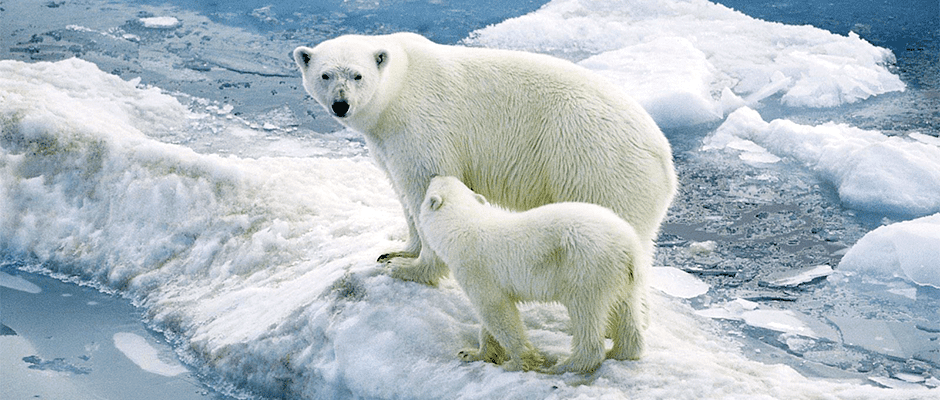Share this article
USFWS releases final polar bear conservation plan
On January 9, the U.S. Fish and Wildlife Service released their final Polar Bear Conservation Management Plan, which calls for “decisive” action to be taken to protect polar bears (Ursus maritimus) from the impacts of climate change.
Developed by a team of researchers from USFWS and the U.S. Geological Survey, Native American communities, the oil and gas industry, and conservation groups, the plan identifies sea ice loss due to climate change as the primary threat to polar bear populations worldwide. The team stresses that conservation actions should directly address the causes of dwindling sea ice and improve regulations surrounding greenhouse gases and climate change.
However, USFWS does not possess the authority to regulate greenhouse gas emissions, so the Service will utilize science-based communication to emphasize the urgent need for greenhouse gas reductions. Nations, like the U.S. and other major contributors to climate change, will be relied upon to regulate emissions to aid in the recovery of polar bears. Of the 19 subpopulations of polar bears that occur in the northern hemisphere, two are contained in the U.S. (Chukchi Sea and the Southern Beaufort Sea). The Plan also focuses on actions that USFWS and its partners can take, particularly in the U.S., such as managing human-bear conflicts and protecting denning habitat.
In 2016, the National Oceanic and Atmospheric Administration reported that the Arctic experienced its highest temperatures ever recorded. These warm temperatures led to the second lowest level of sea ice observed at the summer minimum. Less sea ice, the primary habitat for polar bears, can reduce an animal’s ability to capture prey, breed, and den.
Michael Runge, the Plan’s co-chairman and a USGS research ecologist, said that if the ice can stabilize, populations of bears could be sustained. Polar bears have been listed as threatened under the ESA since 2008 and are qualified as a depleted species under the Marine Mammals Protection Act. There is the potential for the species to be delisted under the ESA in the future if improved climate and stronger ice conditions exist.
The Plan has a broader focus than most management plans, touching on aspects like subsistence take, human safety, and economic activity, while the primary goals are still targeted toward polar bear conservation. The actions are primarily focused on the U.S., but collaboration with Canada and Russia will be integral in successfully implementing management strategies. An Implementation Team will continue to meet to exchange information and assess progress and potential next steps.
Header Image: ©Sheilapic76








